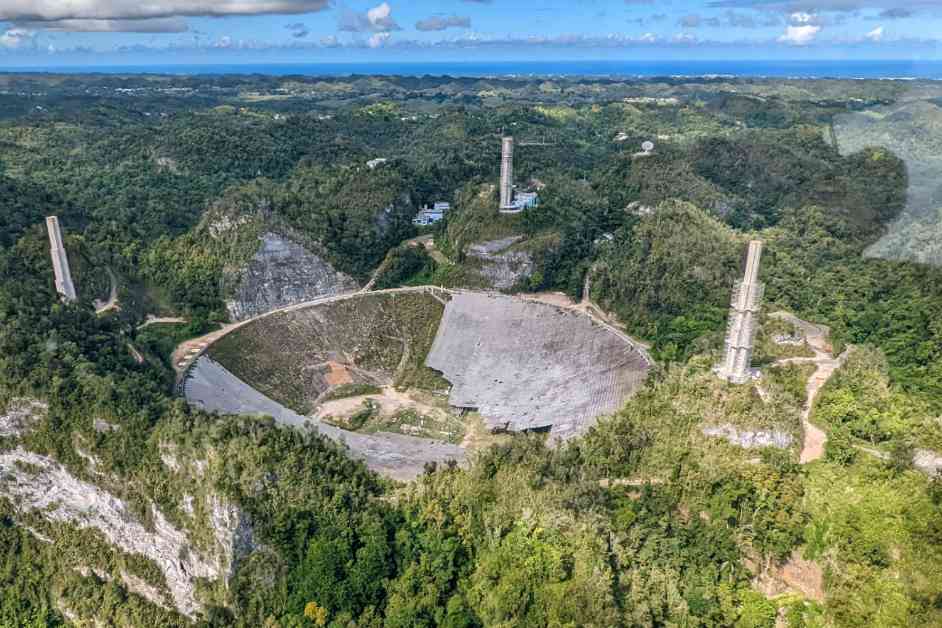The Arecibo Observatory in Puerto Rico collapsed in December 2020 due to a combination of decayed zinc in the telescope’s cable sockets and previous damage from Hurricane Maria. This collapse marked the end of a significant source of radio astronomy data. The recent report published by the National Academies of Sciences, Engineering, and Medicine highlighted the root cause of the collapse as “unprecedented and accelerated long-term zinc creep induced failure” in the cable sockets supporting the telescope’s platform.
The collapse was swift and dramatic, with the platform plummeting through the radio dish in less than 10 seconds, ending the observatory’s 57 years of operation. The Arecibo Observatory had contributed to the discovery of new exoplanets, mapping of other worlds, observation of fast radio bursts, and the search for extraterrestrial life. However, the report revealed that the collapse began well before the final day in December 2020, with a “failure sequence” taking 39 months, starting with the effects of Hurricane Maria in September 2017.
The report also highlighted the lack of concern from contracted engineers regarding cable slippage following Hurricane Maria, raising alarm about the safety factors leading up to the collapse. Furthermore, the committee noted that in over a century of successful use prior to the collapse, such a spelter socket failure had never been reported. The accelerated zinc creep in the telescope’s powerful electromagnetic radiation environment was identified as a potential contributing factor to the catastrophe.
In response to the collapse, the National Science Foundation announced plans to transform the site into a STEM-focused education center with an expected opening in 2023. However, in June 2023, the observatory scaled back its succession plans, and in September 2023, NSF announced institutional partners to manage the transition of the site. While the observatory may no longer collect radio data, it will continue its legacy as a center of astronomical discovery in some form.
The collapse of the Arecibo Observatory serves as a reminder of the importance of regular maintenance and safety inspections in preserving scientific infrastructure. Moving forward, lessons learned from this incident can inform the maintenance and operation of other scientific facilities to prevent similar catastrophic failures. The legacy of the Arecibo Observatory will live on, not only through its past contributions to astronomy but also through the educational opportunities that will be provided at the site in the future.













